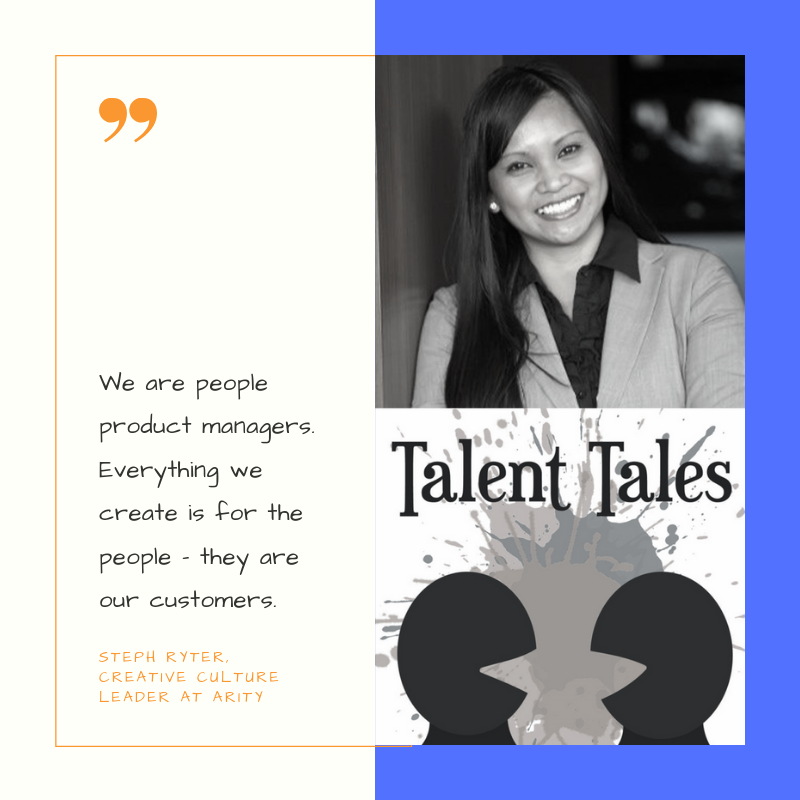In this Talent Tales episode, talent.imperative Founder Nicole Dessain had the honor to interview Steph Ryter, Creative Culture Leader at Arity.
Not only did Steph get to create her own job title (who doesn’t want to be a “Creative Culture Leader”?!), she also has a superpower: “Reading the Room”. Yes, that’s right, Steph is able to sense the energy in the room. BAM!
Steph started her career in Broadcast News after having studied Communications but soon was looking for other ways she might help people. Hello, Human Resources!
In her current role at Arity, she is tasked with transforming the company into a Best Place to Work in Chicago.
And she is applying design thinking to make it happen…
A first step for Steph was to build community by listening to employee suggestions and empathizing around the problems they were trying to solve by using the “yes, and…” tactic (a method used for improv and brainstorming). Then, she enlisted them through “how might we…” inquiry to help make their ideas come to life through prototyping and testing.
Steph describes the ROI of bringing design thinking to people practices as seeing an increase in discretionary effort because employees feel valued. Candidates, especially in technology roles, have choice when it comes to picking their employer and the leader they work for.
Here are some of Steph’s tips for how to get started with design thinking in HR:
Start with yourself.
It all begins with your purpose (or your “why” as Simon Sinek would say). Design thinking is a change in mindset that starts with you and with embracing an attitude of lifelong learning.
Enlist leadership support.
Establishing a culture of experimentation (and, yes, failure) by leaders walking the talk is key to weaving design thinking into your organizational fabric.
Build trust through quick wins.
You don’t need to start with a five year roadmap (which will change anyway). Ask your employees to highlight areas for improvement and then enlist them to be part of the change. It is critical to keep people in the loop and be transparent about what’s working and what isn’t as you prototype and test their ideas. A quick way to do this is by running a Design Sprint.
Want to find out what urban bird watching has to do with design thinking? Watch the entire interview on YouTube or listen to the Podcast.


